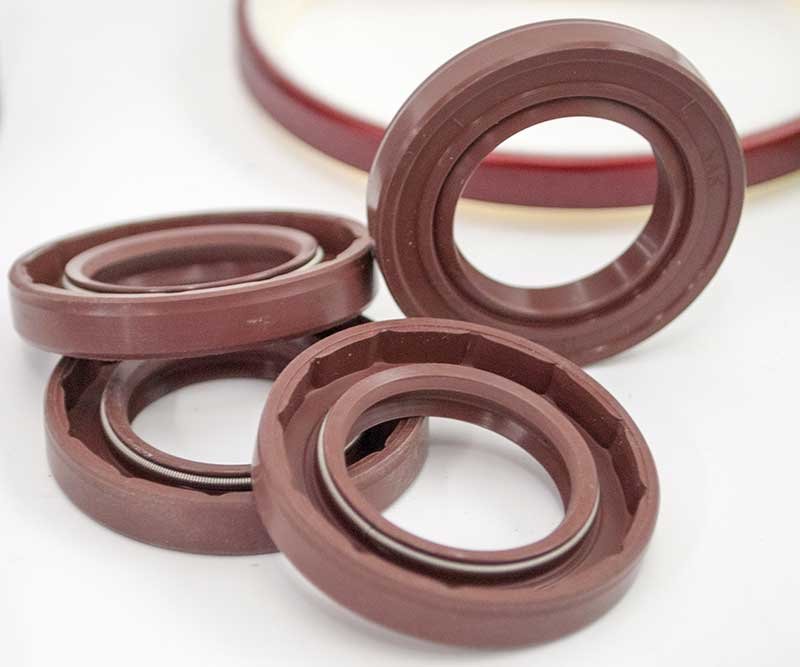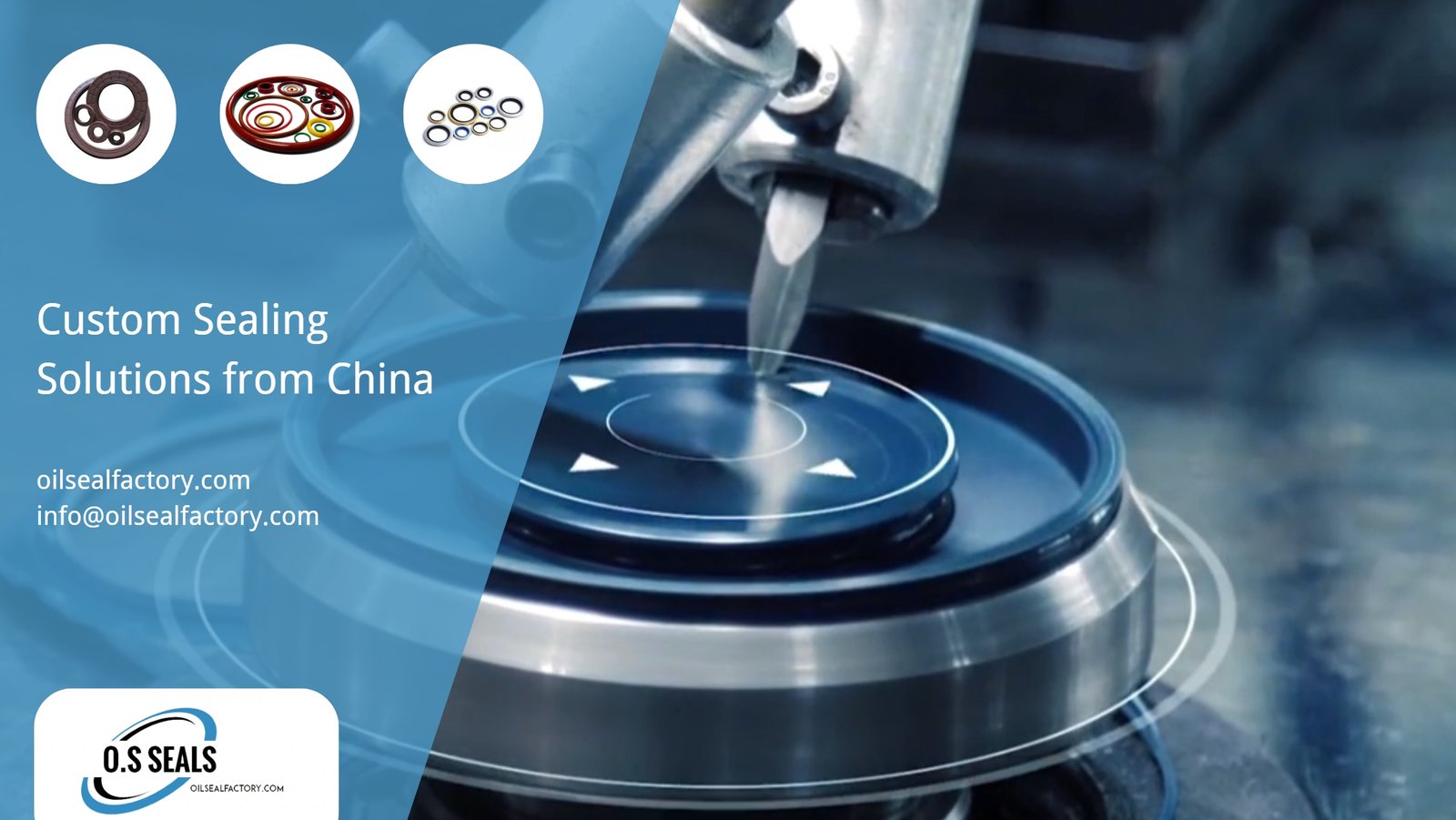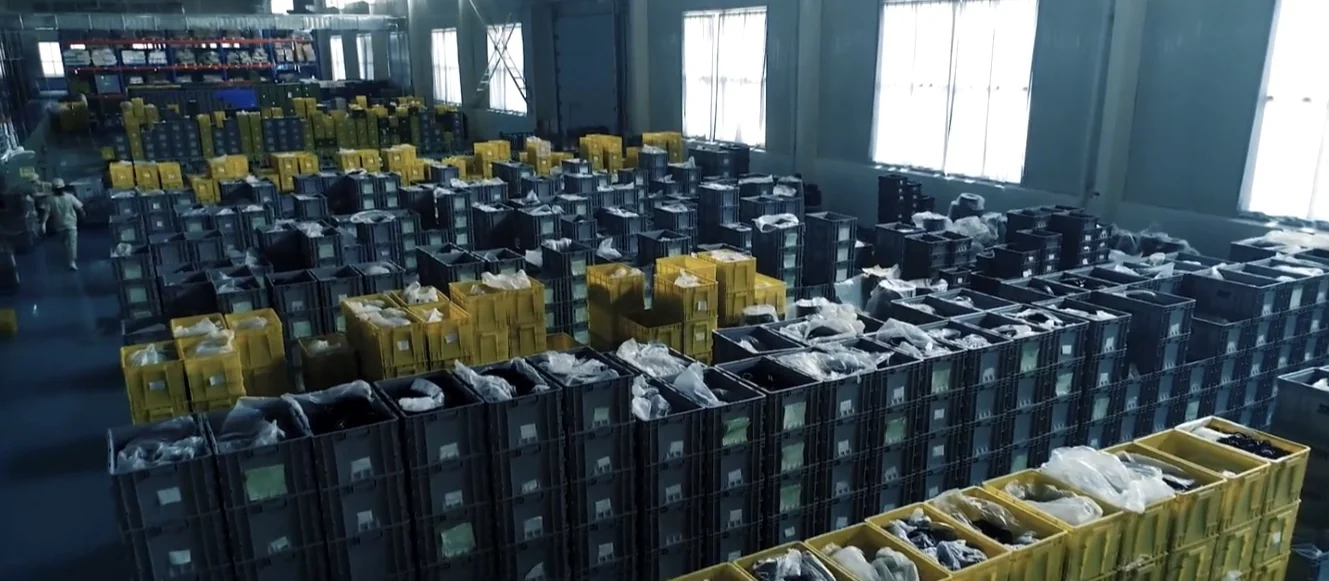The production process of the oil seal is basically composed of the following six sections: rubber preparation, mold preparation, skeleton preparation; Spring preparation, product vulcanization forming, after processing assembly section. Therefore, its process flows basic composition.
1. Rubber preparation section
The main processes of this section are as follows:
Raw material – factory inspection – batching – mixing – filtering – adding vulcanizing agent – rubber material inspection – performing.
According to the above procedure, the raw material can be batching and mixing after passing the factory inspection.
An open mixer or close mixer can be used according to production requirements. Generally, the mixture should be filtered. In order to prevent the burning of the rubber, the vulcanizing agent is added after the rubber is filtered, which is called two-stage mixing.
In fact, some manufacturers in the production of a phase of mixing, all additives before filtration, in the filtering process to control the conditions or consider in the formulation to prevent burning. This method also has some advantages, mainly is to simplify the process, reduce the possibility of secondary pollution of the rubber.
It should be emphasized that the rubber inspection is an important process in the production of the oil seal and also one of the main means to control the quality of the oil seal.
In addition, the performing of adhesive is also the key process of oil seal production. The traditional process is to prepare the film with a certain thickness on the mixer, and then cut it into semi-finished products with a certain shape and weight according to the requirements.
At present, professional oil seal manufacturers are using precision performing machine direct forming. Compared to traditional methods.High efficiency. Accurate shape and weight control of semi-finished products.
2. Mold preparation section
Oil seal mold is the same as other rubber seal mold processing, processing procedures. Usually, the billet is pressed to eliminate its internal stress and then tempered, heat treatment, sometimes cavity surface treatment according to the needs of the mold, such as surface nitriding or hard chromium plating.
3. Skeleton preparation section
The Skeleton preparation section includes skeleton stamping and skeleton surface treatment.
Skeleton stamping generally USES a single stamping, external skeleton and combined skeleton need to use multistage stamping, sometimes also need to carry on the finishing treatment.
The surface treatment of the skeleton is mainly to make the metal skeleton and rubber bond well. The commonly used methods are as follows:
(1) Oil removal (alkali treatment) — dry sandblasting — cleaning — drying — adhesive coating;
(2) Wet sandblasting — cleaning — drying — adhesive coating;
(3) Degreasing, degreasing — pickling — phosphating — coating adhesive.
The traditional process is a step by step intermittent operation, except for sandblasting machine as standard equipment, other equipment are non-standard equipment.
In recent years, many manufacturers have set up continuous skeleton processing production lines, such as wet sandblasting equipment, pickling, phosphating production lines. Degreasing agent, phosphating agent, acid lotion, the adhesive used in skeleton surface treatment are sold in China and can be purchased directly according to the need.
4. Spring preparation section
The oil seal spring is made by placing the steel wire on the spring winding machine. Spring steel wire in the state of winding, the section in different positions, its deformation is not consistent. External tension. Internal compression mouth, that is to say, the steel wire has certain deformation stress, resulting in the spring size instability, elasticity difference is large.
Therefore, the wound spring needs heat treatment. The heat treatment method is to put the wound spring in the oil (anti-rust oil or cylinder oil, etc.) to heat and impregnate, make the stress tempering and anti-rust treatment port.
5. Vulcanization molding section
The skeleton oil sealing vulcanization equipment usually has the common plate vulcanizing machine, the vacuum automatic plate vulcanizing machine, the rubber injection press, and so on.
The vulcanization forming conditions in actual production vary with product specifications and adhesives. At present, what the factory pursues is to adopt high temperatures and short curing molding processes as far as possible under the premise of ensuring product quality.
6. Post-processing assembly section
The vulcanized oil seal needs to be trimmed, especially the lip of the oil seal is the key part to determine the product performance and service life, so it often needs to be trimmed.
According to the oil seal mold structure, the main lip mouth is often shown in the following figure: full-cut lip (full cut), partial cut lip (half cut), molded lip mouth.
Molded lip products are achieved by using a rimless mold, the product can be trimmed with the method of edge tearing.
Full cut and half cut lip mouth products need to use a trimming machine (incision machine) to trim.
Incision machines are sold as standard equipment in China and abroad.
Skeleton trimming and clamping of outer and combined oil seals are generally carried out on non-special tooling equipment.
As the last process of oil seal production, it is equipped with spring, most of the Chinese manufacturers are manual operation, but there are also a few manufacturers imported foreign automatic spring loading machine.





